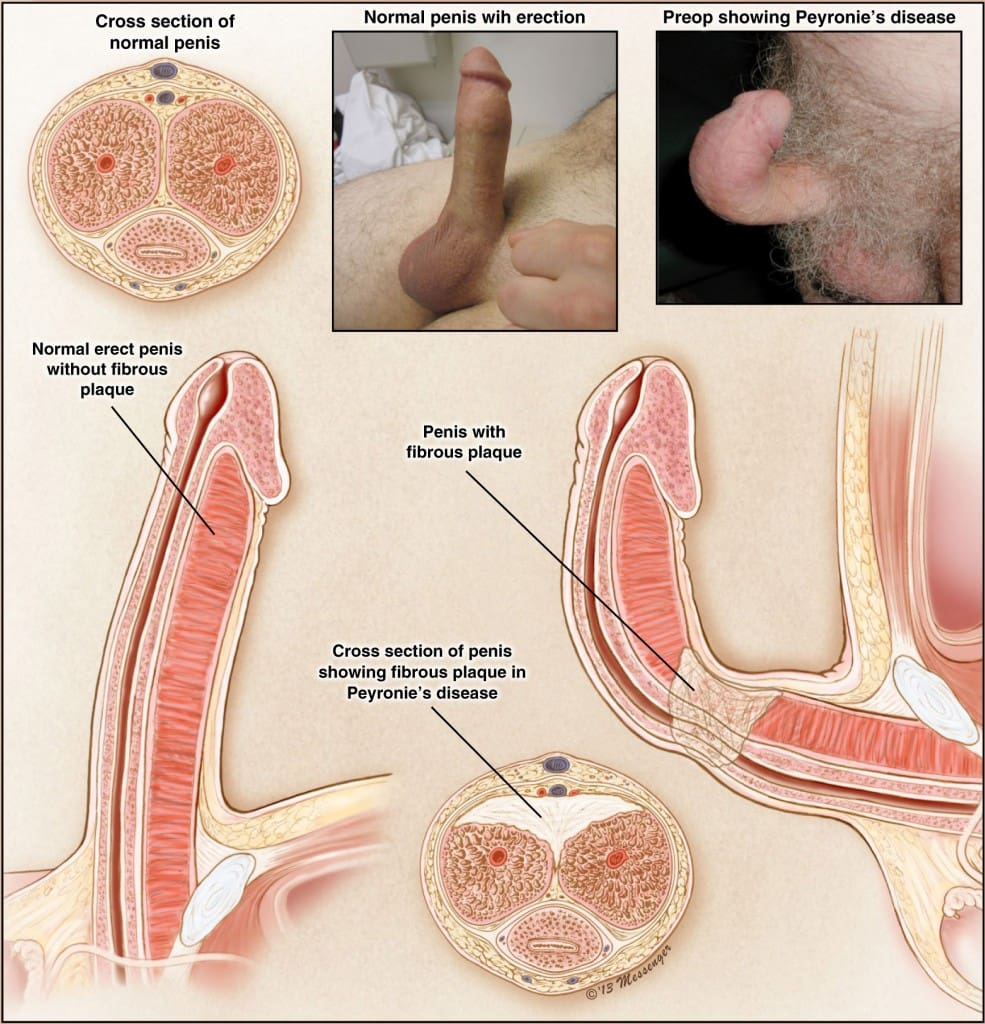Congratulations to Dr. Paul Perito MD, FACS and Dr. Stephen Wilson MD, FACS, FRCS on publishing a new technique in the 2013 Journal of Sexual Medicine to correct penile curvature due to Peyronie’s Plaque.
Peyronie’s Disease (also known as “Induratio penis plastica”,or more recently Chronic Inflammation of the Tunica Albuginea (CITA), is a connective tissue disorder involving the growth of fibrous plaques in the soft tissue of the penis affecting up to 10% of men. Specifically, scar tissue forms in the tunica albuginea, the thick sheath of tissue surrounding the corpora cavernosa causing pain, abnormal curvature, erectile dysfunction, indentation, loss of girth and shortening.
Dr. Pertio’s technique in the correction of this plaque prior to penile implantation:
Modeling (Wilson et al.) allows surgeons to correct most if not all Peyronie’s related curvatures when placing a penile prosthesis without having to use invasive and time-consuming procedures. The accepted rate of urethral disruption from modeling is nearly 5%. To diminish the possibility of this potential complication, the scratch procedure for internal disruption of the Peyronie’s plaque is used as an adjunct to modeling. The procedure can also be used to rid the implanted penis of any hour-glass defects commonly found prior to implantation in Peyronie’s patients.
An artificial erection is accomplished in order to identify the zone of pathology and mark it externally with a pen. An 80-mm nasal speculum is passed across the plaque and opened transversely to fracture the plaque along the x-axis.
A 12-blade scalpel is used to “scratch” the plaque internally along the z-axis, i.e., longitudinally. The depth of the “scratch” further disrupts the plaque along the y-axis, completing the internal three-dimensional disruption of the plaque. An alternative to using a scalpel for the linear incisions is using a pair of sharp Metzenbaum scissors to fracture the plaque.
Once the implant is in place, any additional modeling (Wilson et al.) may be performed. Remember to protect the urethra from distal perforation while modeling by squeezing the fossa. Risk of urethral perforation while modeling after the “scratch” should be diminished.
Below you will find the technique as published in the 2013 Journal of Sexual Medicine with illustrations to help you better understand this pre-implantation technique.

